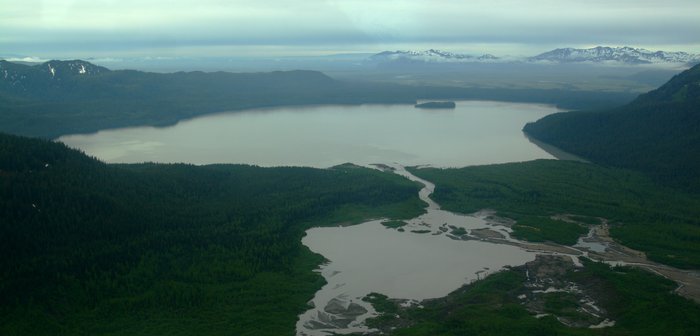
News
In January 2017 the mineral rights for a large portion of these coal fields were permanently retired.
Background

The Bering River Coal Field is a bituminous coal field, located near Bering Glacier, between Icy Bay and the mouth of the Copper River. Also nearby is Carbon Mountain which contains one of the only anthracite deposits in the state. The protection or exploitation of these coal fields has been a contentious issue for many years, starting with the creation by President Theodore Roosevelt of the Chugach National Forest at the start of the 20th century in part to prevent coal development. The first chief of the US Forest Service, Gifford Pinchot, was subsequently fired in 1910 for continued attempts to stop coal development in this area during the celebrated Ballinger-Pinchot controversy.
During the Alaska Native Claims Settlement Act of 1971, the coal fields (~73,000 acres) were chosen by the Chugach Alaska Corporation (CAC) as part of their settlement. The rights to the westernmost 11,000-acres of the Bering River coal title were then transferred to the Korean Alaska Development Corporation (KADCO) in 1991 as part of the CAC bankruptcy proceedings.
The field at that time was transferred with a value of $1 million, however it had been assessed at $99 million so CAC was able to take the difference as a loss, which they were able to sell to other corporations under the “loss selling” amendment of 1986. The $45 million profit on this maneuver was an important part of CAC’s return to profitability. The main shareholder of KADCO wants to retire mining rights on the land and is currently (2017) willing to negotiate a fee title sale price to do so in the near future
Current Status
The Eyak Preservation Council and the Native Conservation land trust have been working to permanently retire mineral rights in the Bering River Coal Fields. In December 2016, they worked in collaboration with New Forests and the Nature Conservancy to purchase and retire the mineral rights owned by Chugach Alaska Corporation (CAC). This deal additionally protected the forests in the same area through a carbon offset deal that was negotiated and brokered with New Forests. This allows CAC shareholders to retain title, and receive carbon offset payments to leave their trees standing for years to come. The additional 11,000 acre coal title is still held by KADCO, and efforts are underway to purchase and retire this title.
Further Reading
Created: Jan. 19, 2018